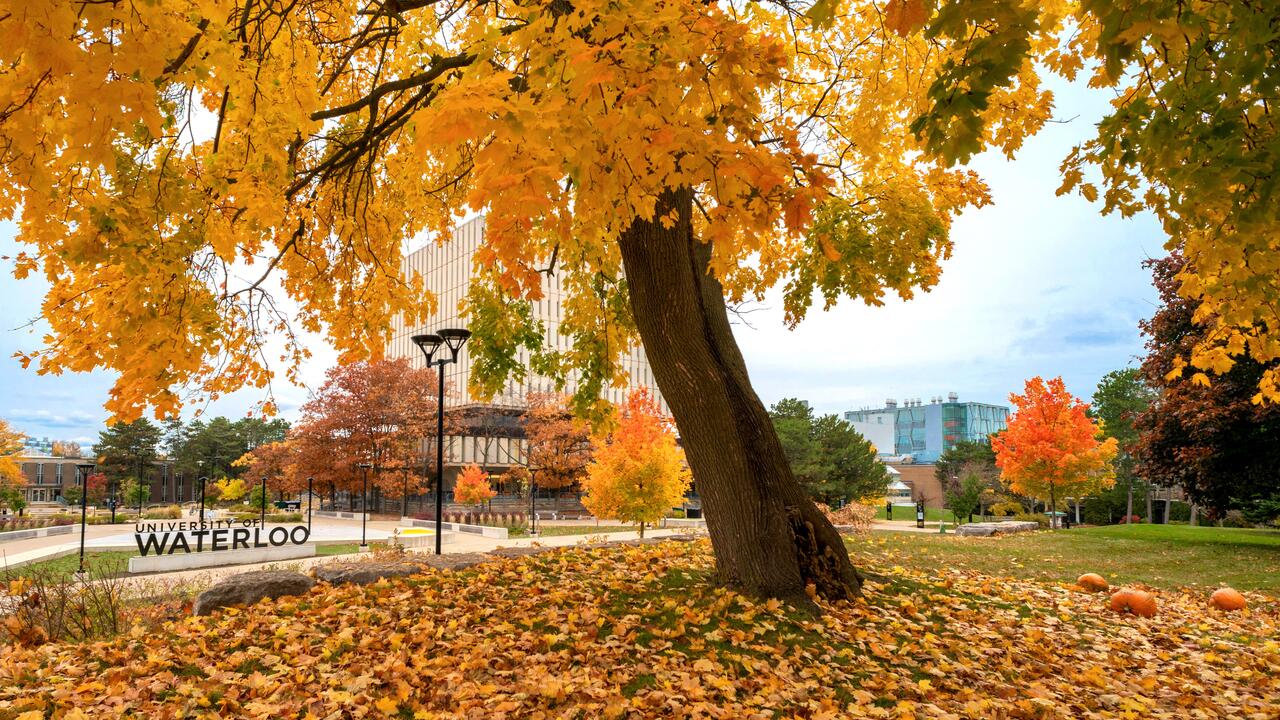
Back to the classroom: 6 quick lessons from the Waterloo community
Learn about sacred spaces, societal issues in AI, a surprising use for psychedelics and more in a new video series.

Learn about sacred spaces, societal issues in AI, a surprising use for psychedelics and more in a new video series.
By Yelda Safi Office of AdvancementHave you ever wondered how a rocket engine works? What your city might look like in the future? How your brain processes information so quickly?
In the ‘Back to the Classroom’ video series, Waterloo students, faculty members and staff answer questions and share their insights on a variety of topics. Keep scrolling to read the key takeaways and watch the full videos.
Zach Mears, current student and Team Lead of Waterloo Rocketry, explains that all a rocket engine really needs is a source of heat, fuel and an oxidizer – the three parts of "the fire triangle." (0:10) In a rocket engine, the igniter puck is the source of heat, the fuel is a type of rubber called HTPB (the same material in erasers), and nitrous oxide serves as the oxidizer. (0:30) Using conservation of momentum, these hot gases shoot out the bottom, pushing the rocket forwards in the opposite direction. Attaching a rocket nozzle is an additional and important step, as it directs the flow of the hot gases and accelerates the speed. (1:00)
You may have heard of psychedelics before, but did you know they can be used to treat mental health? Waterloo alumnus and professor Rohit Ramchandani (BSc ’04) explains that in the clinical context psychedelic therapy research could treat conditions like depression, anxiety and PTSD. (1:51) The trip experience is a time of self-examination and followed by integration, where the clinician and patient analyze the experience and determine how to apply it to behaviour change. (1:18)
“Planners have significant power to effect change, but with that power comes significant responsibilities.”
– Carrie Mitchell, Associate Professor
Many of us wish we could go back to 2019, before COVID-19 hit. Instead of going backward, Associate Professor Carrie Mitchell from Waterloo’s School of Planning describes how we can learn from the changes the pandemic caused and plan better cities going forward. (0:17) Over the past two years, our cities have seen many changes, from expanded sidewalks and restaurant patios to virtual education and remote work. (0:57) However, changes come with great responsibilities because experimenting and transforming cities affects people’s lives. (1:37)
Have you ever walked past the Ceremonial Fire Grounds on campus? In this video, Chloe Blair (BA ’18), a staff member at the Waterloo Indigenous Student Center, shares the importance of the sacred space for students and Indigenous community members and how it’s used to connect. (0:11) It is custom to enter the space from the east. A Fire Keeper is responsible for the sacred fire, and the space is surrounded by four medicine boxes containing sweet grass, strawberries, sage and tobacco, which are harvested in ceremony. However, it’s important to note that not all ceremonial fire grounds are the same. Blair emphasizes that the ceremonial protocols are different across each nation and culture. (1:09)
Alumnus and current student Siyavash Izadi (BSc ’18, MSc ’20) illustrates the amazing processing speed of our brains. He explains that our brains consist of grey matter and white matter. Grey matter takes up 40% of our brains, and is where the processing mainly takes place. (0:17) There are many different factors that influence the processing speed. In an ideal scenario with one neuron, a signal can travel up to 430 kilometres per hour –approximately the distance between Toronto and Ottawa. However, as the neuropathways get more complicated, the processing speed becomes a lot slower. (1:00) In another example, Siyavash illustrates that the average time it takes for the visual system to process information is 200 milliseconds. This means the slowest processing part of our brains, the visual system, is only a fraction of a second. (1:27)
“It’s not an exaggeration to say AI is now interwoven into the fabric of our society.”
– Jimmy Lin, David R. Cheriton Chair
6. Data and AI tech affects society and everyone in it
Data is not just for computer scientists. Jimmy Lin, chair of the David R. Cheriton School for Computer Science, shares why everyone should care about data. Artificial intelligence (AI) has reached and enhanced every sector of our economy, from financial services to healthcare. However, there are data quality issues that can range anywhere from typing in someone’s name wrong, to more serious problems like capturing systemic biases which lead to racist algorithms. (0:47) This is why data matters, and more responsible use is required to create a better future for all. (1:57)

Read more
Four alumni recommendations to advance your career

Read more
Feel like you're living in polarized world? "Teamwork doctor" Liane Davey (MASc '95, PhD '99) explains how to disagree in a more productive way.

Read more
Data expert Asif Khan (BA ’97) offers insight about the data your phone collects, and shares a free service for small businesses during the pandemic
The University of Waterloo acknowledges that much of our work takes place on the traditional territory of the Neutral, Anishinaabeg, and Haudenosaunee peoples. Our main campus is situated on the Haldimand Tract, the land granted to the Six Nations that includes six miles on each side of the Grand River. Our active work toward reconciliation takes place across our campuses through research, learning, teaching, and community building, and is co-ordinated within the Office of Indigenous Relations.